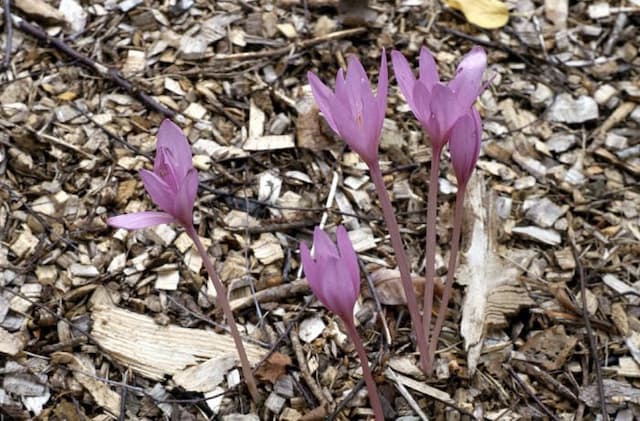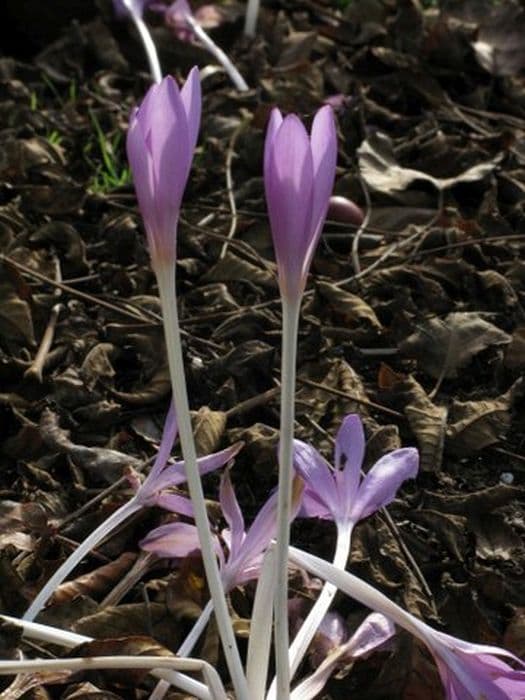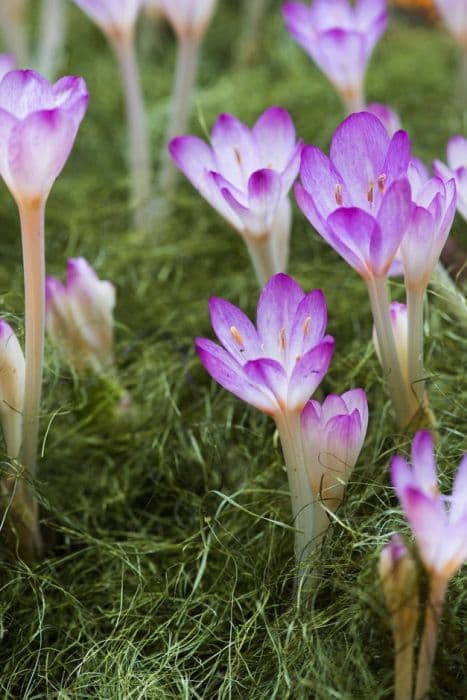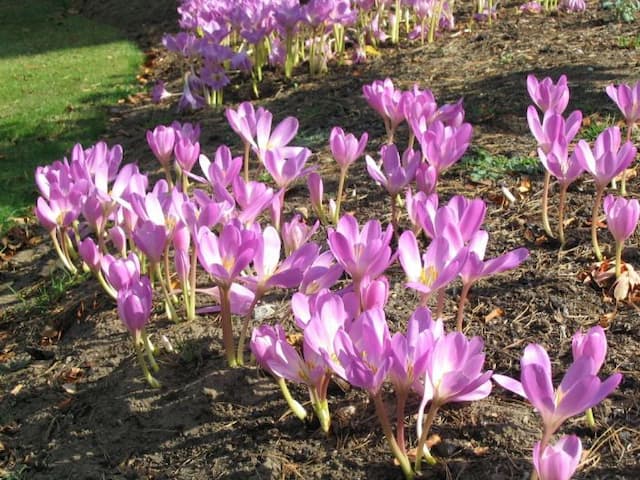Flame Lily Gloriosa superba 'Rothschildiana'

ABOUT
The Gloriosa superba 'Rothschildiana', more commonly known as the Flame Lily, boasts a stunning and exotic appearance. This vibrant plant is characterized by its unique, wavy-edged petals that are painted in a fiery combination of red, yellow, and orange hues, resembling flames, which is how it gets its common name. The petals are long and lance-shaped, tapering to a sharp point. The Flame Lily has a distinctive growth habit, with tendrils at the tips of its leaves that allow it to climb and scramble over other plants and structures. The leaves themselves are glossy and green, creating a beautiful contrast with the dramatic flowers. Upon closer inspection, the interior of each flower harbors bold splashes of color with prominent, protruding stamens that add to its ornamental appeal. It's a captivating plant that is sure to catch the eye of any passerby or admirer of unique botanical wonders.
About this plant
 Names
NamesFamily
Colchicaceae
Synonyms
Flame Lily, Climbing Lily, Creeping Lily, Glory Lily, Gloriosa Lily, Tiger Claw, Fire Lily
Common names
Gloriosa virescens, Methonica superba, Littonia virescens, Gloriosa rothschildiana.
 Toxicity
ToxicityTo humans
The Glory Lily is known for its toxic properties. Every part of the plant contains colchicine and colchicoside, which are poisonous to humans. Ingesting any part of the Glory Lily can cause severe symptoms, including nausea, vomiting, diarrhea, headache, dizziness, abdominal pain, and throat irritation. In more severe cases, it can lead to organ failure, respiratory depression, and even death if not treated promptly. Immediate medical attention is crucial in case of ingestion.
To pets
The Glory Lily is also highly toxic to pets. Similar to its effects on humans, all parts of the plant contain toxic alkaloids such as colchicine. If a pet ingests any part of the Glory Lily, they might exhibit symptoms like drooling, vomiting, diarrhea, abdominal pain, and weakness. Severe poisoning can lead to more serious symptoms such as kidney failure, seizures, and even death. Pet owners should seek veterinary care immediately if their pet has ingested this plant.
 Characteristics
CharacteristicsLife cycle
Perennials
Foliage type
Deciduous
Color of leaves
Green
Flower color
Red Yellow
Height
3-8 feet (0.9-2.4 meters)
Spread
1-3 feet (0.3-0.9 meters)
Plant type
Climber
Hardiness zones
9
Native area
Africa Asia
Benefits
 General Benefits
General Benefits- Aesthetic Appeal: The Gloriosa Lily, often known for its unique and striking flowers, adds visual interest to gardens and indoor spaces with its vibrant red and yellow petals that have a distinctive shape.
- Habitat Enhancement: The plant can serve as a source of nectar for pollinators such as bees and butterflies, thus supporting local ecosystems.
- Erosion Control: When grown outdoors, the robust climbing vines of the Gloriosa Lily can help stabilize soil and prevent erosion on slopes and banks.
- Privacy Screen: Its climbing habit allows it to cover trellis or fences, providing a natural and attractive screen for privacy.
- Floral Arrangements: The dramatic and showy blooms are popular in floral designs, adding a touch of exotic flair to bouquets and arrangements.
- Shade Tolerance: This plant can grow in partially shaded conditions where other flowering plants may not thrive, thus increasing the variety of plants that can be introduced into shaded garden areas.
- Cultural Significance: In certain traditions and regions, the Gloriosa Lily holds cultural significance and is used in festivals and ceremonies, contributing to cultural heritage and practices.
- Space Utilization: As a climbing plant, the Gloriosa Lily can be grown vertically, making it an ideal choice for gardens with limited horizontal space.
 Medical Properties
Medical Properties- Contains colchicine and related alkaloids which have been used in the treatment of gout and familial Mediterranean fever.
- Traditionally used for its anti-inflammatory, analgesic, and antipyretic effects.
- Has been used in folk medicine for wound healing due to its purported antibacterial properties.
- May have antiparasitic properties, particularly against intestinal worms.
- Believed to possess abortifacient properties in traditional medicine systems.
 Air-purifying Qualities
Air-purifying QualitiesThis plant is not specifically known for air purifying qualities.
 Other Uses
Other Uses- Gloriosa Lily bulbs can be used to extract colorants for dyes which are utilized to color fabrics with hues ranging from yellow to red.
- Because of its unique shape and vibrant petals, Gloriosa Lily is used in floral arrangements and as a striking element in bridal bouquets.
- The plant is cultivated for horticultural purposes and is prized for its ornamental value in gardens and as a potted indoor plant.
- The Gloriosa Lily's tendrils can be trained along trellises, making it a popular choice for vertical gardening.
- Captured in photography and botanical illustrations, Gloriosa Lily serves as an object of art and inspiration for artists and designers.
- The symbolism of the Gloriosa Lily, representing glory and honor, allows it to be used in ceremonies that acknowledge achievement and success.
- Seeds of Gloriosa Lily can be used in seed art or jewelry due to their unique appearance, but must be handled carefully as they are toxic.
- The climbing nature of Gloriosa Lily makes it suitable for covering unsightly structures in landscapes, masking them with its beauty.
- Live plants or cut flowers of the Gloriosa Lily are traded internationally, supporting economies in horticultural businesses and flower markets.
- Gloriosa Lily's rapid growth and sprawling vines can be utilized to quickly create natural privacy screens in outdoor areas.
Interesting Facts
 Feng Shui
Feng ShuiThe Flame Lily is not used in Feng Shui practice.
 Zodiac Sign Compitability
Zodiac Sign CompitabilityThe Flame Lily is not used in astrology practice.
 Plant Symbolism
Plant Symbolism- Glory and Pride: The name "Gloriosa" itself suggests a sense of magnificence or pride, and the plant's showy, flamboyant flowers lend themselves to this symbolism.
- Beauty and Splendor: With its vibrant colors and unique shape, the Flame Lily is often associated with exceptional beauty and splendor, symbolizing both physical and spiritual radiance.
- Wealth and Luxury: The Flame Lily's striking appearance and the 'Rothschildiana' cultivar's connection to the influential Rothschild family invoke associations with wealth, prosperity, and opulence.
- Danger and Caution: The toxic nature of the Flame Lily means it is also symbolic of danger and the need for caution, a reminder of the dual nature of beauty.
- Creativity and Inspiration: Its dramatic twist and turns in the petals of the Flame Lily symbolize creativity and the ability to think outside the box.
 Water
WaterThe Flame Lily requires regular watering during the growing season, typically from spring through early fall. It's important to keep the soil consistently moist but not waterlogged. Water when the top inch of soil feels dry to the touch, which may be about once a week, depending on climate conditions. The exact watering frequency will vary, but as a rule of thumb, provide around 1-2 gallons per week during active growth. Reduce watering in the winter when the plant is dormant.
 Light
LightThe Flame Lily thrives in bright, indirect light. Direct sunlight can be too intense and may scorch the leaves, especially during the hottest part of the day, so a spot with filtered sunlight, like behind a sheer curtain, is ideal. If you're growing it outdoors, partial shade works best, providing protection during the peak afternoon sun.
 Temperature
TemperatureThe Flame Lily does best in warmer temperatures, ideally between 60 to 85 degrees Fahrenheit. It can tolerate temperatures down to 50 degrees Fahrenheit but is not frost-hardy, and exposure to temperatures below this can be detrimental. The ideal temperature range ensures proper growth and blooming.
 Pruning
PruningPruning the Flame Lily is important to remove dead or yellowing leaves and to encourage healthy growth and blooming. Prune after the flowering season has ended, typically in late fall. Cut back the plant to the base carefully, as this will help promote a rest period before the next growing season. Pruning once a year is sufficient for maintaining the plant's vigor.
 Cleaning
CleaningAs needed
 Soil
SoilThe Flame Lily thrives in a well-draining, light, and loamy soil mix with good aeration. An ideal soil mix can be made by combining two parts peat or coco coir, one part perlite or sand, and one part compost. This plant prefers a slightly acidic to neutral pH, ranging from 6.0 to 7.0.
 Repotting
RepottingThe Flame Lily should be repotted every 2-3 years or once the tubers start to crowd the pot. The repotting is best done in the spring before the new growth starts.
 Humidity & Misting
Humidity & MistingThe Flame Lily prefers high humidity levels, maintaining around 60-70% for optimal growth. For indoor growing, a humidifier or regular misting can help achieve these conditions.
 Suitable locations
Suitable locationsIndoor
For indoor Flame Lilies, bright indirect light and warm temps are key.
Outdoor
Plant Flame Lilies in partial shade with moist, well-drained soil.
Hardiness zone
9-11 USDA
 Life cycle
Life cycleGloriosa superba 'Rothschildiana', commonly known as the Rothschild's Glory Lily, begins its life as a tuberous rhizome buried in well-draining soil. In spring, the rhizome sprouts into a climbing vine with tendrils that reach out for support, developing lance-shaped leaves. Flowering occurs in the summer, producing distinctive, vividly colored blooms with reflexed petals and protruding stamens. After pollination, often by insects, the flowers give way to seed capsules that ripen and, upon drying, release seeds to the surrounding area. If conditions are unsuitable for germination, the plant relies on its rhizome to survive the dormant winter period. The cycle resumes as temperatures warm, where the rhizome again sprouts new growth and the process repeats.
 Propogation
PropogationPropogation time
Spring-Early Summer
The Glory Lily, Gloriosa superba 'Rothschildiana', is most commonly propagated through division of its tubers. This method is best performed in the springtime just as the plant comes out of dormancy and before new growth begins. To propagate, carefully dig up the tubers, typically after the foliage has died back. Gently separate them, ensuring that each piece has at least one growth point, known as an eye. These sections can then be replanted about 2 to 4 inches (5 to 10 centimeters) deep in well-draining soil, spaced about 8 to 10 inches (20 to 25 centimeters) apart. The tubers should be handled with care as they can be particularly fragile. After planting, watering should be kept light until new growth appears, indicating successful propagation.









